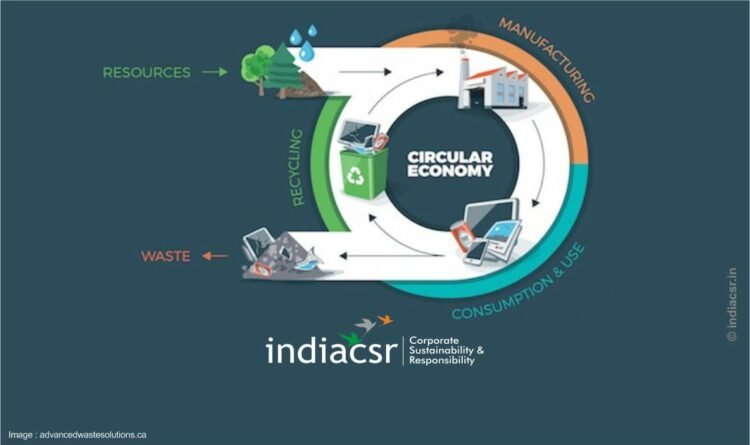Despite the potential to leverage attainment of Sustainable Development Goals (SDGs), the circular economy has been hardly assessed for its strategic instrumentality in development programs. While the dominant linear economy focuses on a take-make-dispose style approach, the circular economy endorses ‘reduce-reuse-recycle’ approaches. The urban markets have their own complex struggles incorporating the circular economy principles within their production-consumption systems. On the other hand, India’s biomass-rich rural hinterland can emerge as a potential hot-spot for the well-established circular economy.
Funded by the HDFC Bank CSR, the BAIF Development Research Foundation, Pune, one of the pioneer organizations in livestock development in India recently completed a project entitled Loksamrudhhi showed the emergence of the circular economy within the integrated livestock development project in Maharashtra.
This article highlights some valuable insights from an impact assessment of the project Loksamrudhhi which underscores the importance of circularization in livestock development and its potential in leveraging SDGs.
Modernizing Livestock Keeping within the Agricultural Livelihood Systems
Operating mainly within the bounds of traditional techniques and practices, livestock keeping remained untapped of its economic potential for long. With an increasing demand for milk, milk products, and meat across the rapidly urbanizing habitats, livestock keeping has been revisited as a viable source of income for small farmers across the globe.
The introduction of modern livestock development techniques such as artificial insemination, mineral mixtures, modern green fodders such as napier grass, mur grass, milk production and, overall productivity of livestock keeping have been increased. With multimodal interventions and continued efforts of NGOs, rural communities learned the new mantra. However, the ecological and financial sustainability of livestock keeping is closely associated with its conjoined existence with agricultural livelihood as there is a symbiotic pattern that fuels the growth on both sides.

Incentivization through Social Entrepreneurship is Key to Circular Economy
The traditional circularization whereby farmers use crop and agricultural waste as fodder for livestock and use the dung for manure was redesigned by BAIF in Loksamruddhi project. At each step of the traditional approach, an appropriate technology-based value chain model was introduced. The dung was mainly used for dung pit-based manure or dung cakes as fuels, under the new approach dung was used for bio composting and bio fertilizer production.
The slurry that remained from the biogas production was recycled as manure for farms. Local self help groups (SHGs) were trained to run bio composting units through which manure and bio fertilizers were produced and sold locally. The residual liquid from bio composting units and livestock urine was used as bio pesticide on the local farms.
Alongside, milk processing and dairy development was promoted and several beneficiaries and a group could start home-based milk processing units to make range products available for local consumption. These enterprises worked not just in terms of economic incentives for farming families but it also reduced high cost for modern chemical-based agricultural inputs by providing cheaper natural inputs such as bio fertilizers and bio pesticides.
The ‘Reduce’ Mantra of Circular Economy
Implementing the principles of circular economy evolves through its own pathways at the grassroots. To envisage the circular economy in rural livelihood systems it implies a strategic thrust on the reduction of products and goods from outside. With the emphasis on reduction in the use of purchased inputs such as animal feed, fodder, and other agricultural materials there was a scope for local alternatives.
The increased consumption of locally produced milk, milk-based products, and the use of locally produced bio fertilizers and bio pesticides the livestock development processes have been leading towards visible circularization and effectively forming a circular economy. Furthermore, animal-waste-based products such as bio pesticides and bio fertilizers have reduced the reliance on chemical fertilizers and pesticides purchased from outside. It should be noted that these are the components that increase the input cost in farming. The reduction mantra is clearly visible and leading to local self-reliance.
If CSR and active NGO partners integrate policy-based circularization strategies in integrated rural livelihood projects there is a high possibility of the formation of a sustainability paradigm.
(Views are personal)





